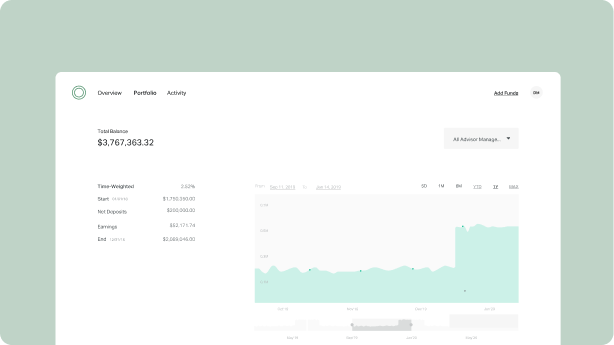Benjamin Franklin once said, “Nothing is certain except death and taxes.”
And while this statement is mostly true, Mr. Franklin never saw a world with programmatic capital gains tax savings.
Today, mass affluent clients can benefit from tax-saving strategies historically reserved for the ultra-wealthy. Chief among these strategies is direct indexing, a tax-optimized method of tracking broad market indices.
What is direct indexing?
Direct indexing is a portfolio management strategy that offers broad market exposure while creating significant tax savings opportunities.
The concept of direct indexing evolves from a widely echoed piece of investment advice: invest in a diversified pool of equities to track broader movements in the stock market. While this is generally sound advice, this strategy can create tax inefficiencies due to the structural characteristics of mutual funds and exchange-traded funds (ETFs).
Instead, direct indexing enables you to buy individual stocks that make up a particular index—like the S&P 500—benefiting clients with index-like exposure but with the ability to book tax losses on positions that have decreased in value.
“Direct indexing can offer significant tax advantages. By directly owning securities that make up an index, losses can be harvested in positions that are down even when the market is up overall.”
—Adam Grealish, Head of Investments, Altruist
The evolution of direct indexing
When investors or investment managers buy into a diversified pool of stocks, they typically do so through mutual funds or ETFs.
The popularity of index fund investing began in 1976 when John Bogle, Founder of Vanguard Group, introduced the Vanguard 500 Fund, a mutual fund that tracks the returns of the largest 500 companies listed on U.S. stock exchanges. For the first time, investors could diversify their portfolios with a single security in their investment account.
Over time, investors noticed certain tax inefficiencies with mutual fund investing. Mutual funds are registered as open-ended funds—continuously accepting new investors and allowing existing investors to liquidate or “redeem” their shares. This structure means that as investor redemption requests are made, the mutual fund must sell fund shares on the open market to deliver cash proceeds to the redeeming investors. A taxable event is created each time the mutual fund sells shares—whether you’re the investor who is redeeming your shares or not—which means that you may be required to pay capital gains taxes on the transaction activities of a mutual fund even if you remained invested.
The taxable nature of mutual funds led to an interest in alternative investment structures that could track broad stock market movements.
In the 1990s, ETFs were introduced as an alternative to bypass the tax implications of mutual funds while still providing broad market exposure. In the last thirty years, the ETF industry has grown to over $10 trillion in global assets under management as investors seek tax optimization.
Unlike mutual funds, ETFs trade on the secondary market, where buyers and sellers transact without any individual stocks being sold. Behind the scenes, the ETF sponsor works with an authorized participant to regulate the supply of available ETF shares, ensuring the market value aligns closely with the fund's net asset value. This structure helps investors to track market indices without being subject to capital gains tax before selling their shares.
The creation of ETFs significantly improved the tax disadvantages of mutual funds but still left room for further tax optimization. Enter, direct indexing.
Direct indexing initially emerged as a portfolio management strategy targeted toward ultra-high-net-worth individuals. Providing this service to customers was quite laborious, often involving manual transactions in each security and the manual harvesting of certain tax losses in the portfolio. Additionally, the amount of capital required to purchase a broad basket of stocks to accurately track an index often meant investment minimums were $250,000 or more. As a result, in considering the cost-benefit tradeoff advisors generally reserved this service for only their top clients.
However, technological improvements are enabling all types of investors to follow a direct indexing strategy through fractional share ownership, algorithmic exposure to underlying index securities, and automated tax loss harvesting.
Benefits of direct indexing
Direct indexing provides investors with several benefits in comparison to other indexing strategies.
Opportunities for tax savings
The primary benefit of utilizing a direct indexing strategy is the opportunity to lower your tax bill by offsetting capital gains with losses.
While manually keeping track of, say, five hundred stock positions—if you were attempting to track the S&P500—would be complex, direct indexing solutions today do this for you automatically. By having exposure to the index’s underlying positions, you can then decide to manually sell stocks that have decreased in value to capture those tax losses.
Your tax losses can offset capital gains from selling other securities or real estate. If your tax losses outweigh your capital gains, you may even deduct up to $3,000 on your tax return (if filing jointly) and carry excess tax losses forward to offset gains in future years.
Customized asset selection
Investors can personalize their unique index by increasing or decreasing exposure to specific individual securities. Although the goal is typically to track an index closely, there may be reasons why an investor wants to avoid exposure to a single stock or industry in an index.
If certain companies or even an industry don’t align with your ethics or preferences, you can exclude that index component. You may also have concentrated exposure to individual stock in a different fund or through an employer account. In this case, you may want to omit that stock from your direct indexing approach to lower your potential exposure.
By investing in funds, you don’t have the choice to customize your portfolio. Direct indexing changes this and gives you the power to customize your portfolio.
Cost savings on management fees
A direct indexing strategy reduces your exposure to expense ratios, fees, and market deviations.
Mutual funds, in particular, can charge investors hefty fees. Mutual funds typically charge investors an expense ratio, a percentage of your invested capital, as low as 0% for passively managed funds or upwards of 1% or greater for more actively managed funds. Investors may also pay sales commissions on fund purchases, known as “sales load,” as well as redemption fees, and incur other hidden costs.
Similarly, ETFs charge expense ratios, albeit typically much lower than mutual fund expense ratios. In addition, investors who purchase ETFs may be disadvantaged by the small fluctuations in the market price relative to the net asset value, particularly if the investor is paying a premium for the ETF.
While direct indexing largely avoids these fees and structural disadvantages, it’s important to note that the portfolio management strategy can introduce additional platform fees and can result in slight tracking error deviations to the benchmark index when certain losses are harvested.
How direct indexing works at Altruist
Direct indexing is now widely available thanks to fractional share capabilities, low-cost trading fees, and a technology-forward implementation. At Altruist, we enable our clients to access direct indexing strategies with as little as $2,000 minimum investment. We offer Direct Indexing embedded within certain models in our Model Marketplace and as a standalone model.
With TaxIQ, advisors can algorithmically determine the optimal time to sell individual securities in client portfolios that have decreased in value, while also avoiding wash sales and making smart rebalancing decisions around gains deferrals.
“Direct indexing at Altruist allows advisors to easily implement highly customized, tax-efficient strategies across their entire book of business.”
—Adam Grealish, Head of Investments, Altruist
How advisors can get started with direct indexing strategies
Traditionally reserved for the ultra-wealthy, advances in technology are making direct indexing more widely available.
Direct indexing can be the right choice for any advisor looking to offer clients low-cost exposure to an index while maintaining autonomy over their asset selection and optimizing tax savings.
At Altruist, advisors are empowered to provide clients with direct indexing options that fit their personal and financial goals. Reach out to Altruist today to learn more about our direct indexing solutions and whether they may be a good fit for your clients.









